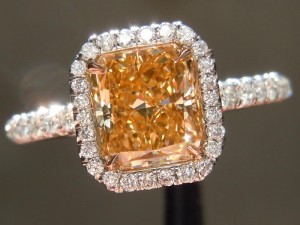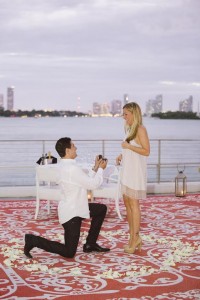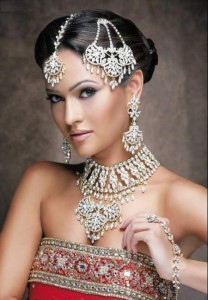
“The Pink Star,” a 59.60-carat oval cut fancy vivid pink diamond, sold on Nov. 13 for $83.2 million at a Sotheby’s auction in Geneva. Described as the largest internally flawless diamond ever graded by the Gemological Institute of America, the stone was promptly renamed “The Pink Dream” by its buyer, the New York-based diamond cutter Isaac Wolf. It had been estimated at over $60 million.
A day earlier, Christie’s Geneva auctioned “The Orange,” a 14.82-carat diamond, billed as the “largest fancy vivid orange diamond in the world,” for $35.5 million. It had been expected to sell for $17 million to $20 million.
“Ten years ago the stone would have made a fraction of this price,” said Rahul Kadakia, head of jewelry for Christie’s Americas and Switzerland, referring to “The Orange.”
With big diamonds fetching such stratospheric prices this autumn, it is small wonder that the stones have held their value with collectors and investors. The reasons range from the rarity of the stones, especially the colored varieties, to the desire of wealthy investors to diversify their portfolios with tangible assets as a hedge against volatile equity markets.
Large diamonds have proven to provide good returns on investment in recent years. A 50.01-carat rectangular cut diamond that was sold at Christie’s New York in 2005 for $4.2 million came back to market last year and sold for $8.4 million. Both times, the diamond was purchased by the jeweler Laurence Graff, who had resold it in the interim.
Such large stones are purchased by individuals and jewelry firms with an “investment element always present,” Mr. Kadakia said, adding that the fact that Mr. Graff was willing to pay twice as much the second time around was “a very clear indication of the direction for the rare diamond market.”
On Oct. 7, Sotheby’s Hong Kong sold a 118.28-carat oval brilliant-cut diamond billed as the “greatest white diamond ever to appear at auction” for $30.6 million after a six-minute bidding war, while another brilliant-cut diamond weighing 20.05 carats went for $4.06 million.
“There will always be a market for stones from 1 carat to 10 carats, but at 50-100 carats we are looking at an elite buying field, and the rarer they are, the better they fare,” Mr. Kadakia said.
Colored diamonds are continuing to climb in value as the market realizes that the supply is dwindling. The Rio Tinto’s Argyle mine, which produces more than 90 percent of the world’s natural pink diamonds, is expected to be closed in 2020.
On October 14, Argyle held its annual sale to invited members of the trade: a single bid per stone for each of the 64 lots on offer. Two price records were broken: the Argyle Phoenix, a 1.56-carat fancy red diamond, fetched the highest price per carat for a diamond ever produced from the Argyle mine, selling for more than $2 million.
“In the colored diamond world $1 million per carat is now normal, which in itself is a headline,” Mr. Kadakia said.
John Glajz, a diamond wholesaler and seasoned bidder who bought the Argyle Phoenix along with another nine stones, said he was “a little surprised” at how high the prices went.
“I expected to win more stones as I bid quite bullishly,” he said. “I have seen the demand for these rare and beautiful stones continue to grow over the past years. The perception that they may become extinct in the not too distant future is a factor.”
Wealthy individuals have been investing in diamonds as a secure asset in an uncertain environment of low interest rates, according to Wealth-X, a consulting and research firm specializing in the habits of ultrahigh-net-worth individuals, those with net worth of at least $30 million.
The recent anonymous purchase of the $30 million egg-size diamond from Sotheby’s “is yet another demonstration of the rising prices, and associated investment strength of diamonds,” said Mykolas D. Rambus, chief executive of Wealth-X.
Of course, many wealthy individuals also own diamond jewelry as fashion items. But the trend toward using gemstones to supplement or balance an investment portfolio seems to be growing, as evidenced by the prices of large gemstones.
An added component of their investment value is that reselling the stones, even if they have been purchased at a premium price, is “not difficult” given their rarity, Mr. Glajz said.
“I have bought Argyle tender stones from the secondary market — i.e., from other successful bidders or their clients — and I have been known to repurchase tender stones that I sold to various clients in previous years, and pay substantially more than my original selling price to them,” he said.
The prices of white diamonds — the classic, clear stones that, while rare, are not as rare as their colored counterparts — peaked in mid-2011, according to Edahn Golan, founder of Edahn Golan Diamond Research & Data.
“So far this year, prices are very stable, fluctuating by about 2 to 4 percent, depending on the size of the diamond,” he said.
Round diamonds smaller than three carats have had average price increases of 8 percent to 33.5 percent since 2004, while prices of larger round diamonds have increased much more. Three-carat diamonds have increased 77 percent, four-carat diamonds by more than 140 percent and five-carat diamonds by 112 percent since 2004, he said.
But as with any market that seems too hot to cool down, caution is advised, investment managers say. People should not jump in too enthusiastically, they say, and they should not go in alone.
“Colored diamonds belong to a select market whose participants are seldom affected by economic conditions, thus creating a natural hedge,” said Eli Butnaru, chief executive of Mora Wealth Management.
Mr. Butnaru said he did not actively encourage his clients to invest in gemstones. “In exceptional cases we would consider a 2 percent to 3 percent allocation in colored stones only,” he said. But even then, he advised against individuals’ bidding on the stones because they could not compete with professional bidders.
A fund that specializes in gemstones, Mr. Butnaru said, “has the ability to secure better prices than those obtained by individuals, and more importantly, with an exit strategy.” Certain funds also have expertise on how the stones are cut and polished, and can actually improve the value of a purchase, he said.
A sign of the times: The Singapore Diamond Investment Exchange, which markets diamond funds, has seen its volume grow sevenfold, to $20 million this year from $1.5 million last year.
“We are confident to double this amount in 2014,” said Alain Vandenborre, chairman and founder of the exchange, which recently changed its name from the Singapore Diamond Exchange to avoid confusion with traditional diamond exchanges, where the stones are bought and sold by merchants and jewelers.
Investors interested in a diamond portfolio with the Singapore exchange will need a minimum investment of $1 million. Most of the portfolios the exchange has sold to date contain stones from 2 to 10 carats, though the exchange has also sold large stones in the range of 15 to 20 carats.
Although initial demand came from the Asia-Pacific region, most of the new investors are coming from Europe and Russia, Mr. Vandenborre said.
“Our portfolios have performed between plus 3 percent to plus 10 percent for the first half of 2013,” he said, adding that all the exchange’s portfolios have outperformed benchmark indexes.
“It is too early yet for us to see existing clients topping up in their initial portfolio, but what is encouraging is that we now have prominent clients who are referring us to their friends,” Mr. Vandenborre said.








